Looking at Play From the Outside
As a designer of play apparatus and spaces I try to ensure my projects will be of high value to children by including attributes that I have learned are required to create a great play setting. For example, does the environment link activities and allow the play to flow? Does it support social interaction? Are there various degrees of challenges? etc. If you create or buy playgrounds, I’m sure you use similar criteria.
Lately, I have begun to see that this way of evaluating a play space is looking at play as a product rather than an experience. To begin to create truly innovative projects, I needed to find a new way of thinking about designing based on a deeper sense of play rather than just focusing on the physical objects.
As I reflected on this question, I remembered the work of Jimi Jolley, who was one of the most inspirational and original thinkers I have encountered in the field of play design. He was often dismissed as being too far out and experimental but that was not my experience of him. Rather, I saw that he had a tremendous heart for kids and play. Thinking back on his work and message I realized that for the most part, I have neglected the emotional experience of play, that is, focusing on the developmental benefits of a play space misses how it feels to play.
Feeling Out Play
Fearsome Play
Over the past year or so I’ve been trying to come up with a way of integrating and supporting the emotions that children feel during play and to use those understandings in my design process. Here’s an example of how this new perspective can change how we design play spaces.
In these days of cookie-cutter playgrounds, there is a lot of pushback by parents, educators, and kids that playgrounds are no longer challenging. This observation is no doubt true, but to some extent, it misses the point. The impulse to make playgrounds more challenging generally starts by making them higher. The next common solution is to increase the strength, coordination, or motor planning required by the environment.
While all of these functional ideas do increase the challenge, and thus the “fear” factor, they tend to compartmentalize the challenge to just the physical aspects of play. They do not go to the core experience, which is vulnerability. As Brené Brown so elegantly and profoundly explores in her books and Ted Talk, vulnerability is a learned skill. Yes, you feel vulnerable when you are on a high perch, but you also feel vulnerable when you are making a new friend, exploring a spooky space, or just about any new challenge.
By reframing “challenge” into “vulnerability” we alter the discussion and design task from adding risk to creating an atmosphere of support where it is less threatening for the child to go beyond their comfort zone. Making a paradigm shift to begin to intentionally create play spaces that are safe places to be vulnerable rather than just risky opens the door to innovation and unanticipated solutions.
Connected Play - The Eyes Have It!
On an emotional basis there are few more touching moments than when we gaze into each other’s eyes. There is a “language” to eye contact. An infant gazes at you without any other agenda than simply “seeing” you. They look for subtle clues about your emotional state and do so without expectations. As children mature they learn to put a value on what they see: are you angry, are you glad to see them? Over time they learn to maintain long periods of “connected play” by periodically “checking in” as just a glance will suffice to let them know that they are still joined with their playmate. Another way eye contact creates connection in play is when we hear “Watch me!” or “Look it!” as the players perform for us. As designers watching for eye contact and the messages contained by these glances give us a way to know if the spaces we create “work” to support connected play.
Connected play creates emotional bonds. The longer we remain connected, the greater our capacity for trust in the other, and more importantly, trust in ourselves. The ability to remain emotionally attached during times of conflict is yet another skill that can only be gained through practice and the best and “safest” place to gain this skill is during play.
I can think of several ways that eye contact between players, and thus connected play, can be supported by sensitive environmental design. Reframing the play experience to include the notion of fostering connectedness can be another powerful tool for innovation.
Emergent Play – Its Magic
We all say that childhood is a magical time but what do we mean by this? Don’t we mean that, for kids, reality is a pretty fluid notion? During play many things magically emerge, disappear, or are transformed; a piece of string becomes a snake only to be transformed moments later into an accessory for a dance. In games like peek-a-boo, hide and go seek, and throwing things out the car window or flushing them down the toilet, making things “all gone!” ¾ children are playing with what is “real,” what is tangible and constant.
For kids there is no reason that things can’t just magically be transformed or emerge from nothing. There is a distinct emotional quality to this emergent play and the words “awe” and “wonder” hint at that feeling. I sense that none of us are on as firm a footing, reality-wise, as we would like to think. We tend to believe that reality is concrete and immutable. But as any good magician or physicist can quickly prove, things are not as real as we think they are. For the child, reality is like play, an emergent quality. In games of peek-a-boo, they may be closer to “reality” than we adults who think we are the ones who live in the real world.
Joyful Fun
Not all play is joyful, but joy is always playful. While many equate joy with pleasure or with happiness, it is fundamentally different from either of these. When we look at the feelings of fun and joy, we can see they are two sides of the same coin. Unlike pleasure and happiness, which can be experienced by an individual, joyful fun emerges between people, and play is where this is most often experienced.
One of our goals in designing and creating play spaces should be to rigorously support children so that they can have joyful fun as often and for as long as possible. To accomplish this we cannot ignore the child’s emotional experience. Indeed, using feelings as the starting point is the only way this goal can be realized.
An Emotional Barometer
What I am proposing is to begin to look at play spaces in a new way. Rather than counting the swings, slides, and climbers on a playground or the number and kinds of toys in the playroom, I suggest we try to assess how it feels to be in these spaces with others.
As parents, rather than making sure our child plays on all the equipment, I suggest we ensure that we join our kids by making a strong emotional connection and that we notice and respect the feelings that emerge between us as we play. We should watch for and celebrate moments of vulnerability that emerge so that we can support the play process without disrupting its flow.
As designers, we must add to our skill set the ability to “feel” into the spaces we create and the activities we enable. Gaining such skills will indeed be a challenge. It will require that we open places in our hearts that have seldom been called upon in our normal practice. Sharing our insights with our clients will be even more challenging since we don’t have the language for this conversation — at least not yet.
More Feelings: Head and Heart
Above I suggested a new way to evaluate play spaces. Rather than focus on the physical attributes such as physical challenge, aesthetics, or safety I proposed that we try to understand the feelings that these spaces invoke in children.
Specifically, I suggested several distinct types of feelings.
- Fearsome play: those experiences in which the child feels vulnerable and is extending themselves beyond their comfort zone.
- Connected play: occurs when children are playing together and is generally associated with eye contact.
- Magic play: is on those occasions when children begin to explore the feelings of being and non-being.
- Joyful play: is when the child is in a sense of euphoria.
As I continue to explore this notion of the feelings that children have when they play I have discovered that there is a whole universe of emotion to be explored. Here are some additional feeling states for you to consider.
Story
One of the most consistent characteristics of children’s social play is their ongoing monolog that provides the “story” about what they are doing. This “script” provides the context for behavior; “I’m the mommy and you’re the daddy and you have to put the baby to bed because I’m making dinner.”
As often as we overhear these charming mini-theatrics we seldom consider how children feel when they are playing in this way. There is, of course, the internal sense of creating a make-believe world where they can experiment with the dynamics of their daily lives. Consider the above script, as a child would experience it if they were without a father in their home as opposed to a child living with both parents. The feeling state would be radically different.
These play scripts also provide an ongoing structure for the social interaction between the players. Once again consider the above script if one of the players comes from a home with same-sex parents. The response of the playmate might be; “No, I’m not the daddy, I’m the other mommy.” The subsequent dialog would have a lot to do with the player’s sense of reality and their feelings of inclusion.
Quest
The feelings invoked by quest play are related to the feelings supported by story play but are slightly different. In quest play, there is a new script element – a “problem.” Typically the problem is to find something: “dig to China” or “find the Ogre’s hideout.”
In quest play the focus is external to the children rather than in story play where the focus is on their own experience. In this sense quest play is less “fearsome” as we have used the term to denote a sense of vulnerability; it is emotionally safer to go on a quest than to expose personal aspects of oneself in an ongoing story that is shared. It is not unexpected, therefore, to see boys typically on a quest while girls create elaborate social stories in their play.
Eureka
Eureka moments during play are precious. They tend to occur most often during constructive play when children figure out how something works. Of course, they can occur during any play but they are most poignant when they are in a social context. This can be seen in quest play when the goal has been achieved, “Here’s the Ogre’s hideout!”
It is important to note that many times the Eureka moment has little to do with the physical world but rather with the emotional flow of the play. The Ogre’s hideout doesn’t exist but is declared by one of the players and their assertion is either accepted or rejected by their playmates. Children naturally seek these Eureka moments and the acceptance of imaginary solutions is a powerful way for children to reinforce their emotional connections with their playmates.
Grounded
As adults we know, or should know, when we or those around us are “grounded,” that is, have a sense of themselves and their relation to others. As parents or caregivers we generally pay a lot of attention to whether our children are in a “grounded” state. We most often notice that a child is ungrounded when they are disruptive, but it can also manifest as an emotional disconnect that leaves the child passive and isolated.
Since monitoring kids to try to keep them grounded is a primary focus of caregivers, it is surprising that consideration of this is not also a central part of the play designer’s lexicon. Indeed, as we look at typical play spaces, one would conclude that their creators aim to purposefully upset the children. These design blunders include overly stimulating environments, layouts, and features that create competition and conflicting functions such as play sand in a highly active area.
Familiar
Playing with the familiar is an aspect of grounded play but is slightly different in that it is based on allowing and honoring that there is a distinct emotional quality to those things and places that are well known. As with the child’s favorite toy or “blanky,” these familiar things essentially become an extension of the child herself.
When we value the stimulation that comes from the new and novel more than the familiar, we can foster an ungrounded state. I suspect that some of the resistance to playground renovation and the loss of traditional play activities is the sense that these very familiar places and activities have value precisely because they are so familiar.
The feeling states we’ve begun to explore here in Head and Heart are all related in a way; they tell us something about what the conscious mind is doing while the child’s emotions are working through their process. As designers, we have focused primarily on what the child is doing and rarely on supporting the associated emotional content.
Playing with Emotions – Body Play
Do Infants Think?
I have a new grandchild and have been able to closely observe her and ask myself what is she thinking. After several months I have concluded that for the most part, she isn’t thinking at all, at least as we normally think of thinking. That’s not to say her brain isn’t working, it’s going at top speed, at least while she’s awake and has her other needs met, taking in everything in her environment. However, her processes of discovery and pattern recognition are not the same as thinking.
Whether you agree with my assertion that infants may not really “think,” you must agree that their emotions are operating at full speed. In just five minutes of observation, I can see Bonnie’s face express surprise, recognition, discomfort, curiosity, love, and more.
I’ve watched my grandson, who is just two years old, run down the slope of our driveway. He’s at the stage where he’s learning how to control his speed and not get carried away and do a face-plant. In those moments I am quite certain that he is not “thinking” about the mechanics of his walking gait but rather enjoying the emotions that arise. As I try to empathize with him, I suspect he is feeling joy in successfully performing a difficult task. He’s very much into airplanes and looks up every time one flies over, so I also imagine that he can relate his running down the slope to flying. He certainly makes the connection when he’s swinging at the park. It helps that his parents will often accompany his swinging with a chorus of “Look, he’s flying.”
So what is going on here? What these observations imply is that play in infants and toddlers is predominately, if not entirely, emotional. I think it is fair to say that the strong emotions that arise within the body during play form the basis for concept development and language acquisition. Well, duh! We’ve known this process for as long as we’ve had a science of child development. The thing is, we often don’t behave as though we understand and value the dominance of emotion in early childhood.
I recently read an article from the Guardian, Newborn babies may be more developed than we think, that is typical of the way we address infant and toddler development. The studies cited in the article all asked what is the child doing intellectually. I contend it would be much more useful and productive to ask, what is the emotional state of the child?
The infant is all about their emotions. By about seven years of age, movement begins to dominate the child’s life. Play settings for the youngest children should be designed primarily for emotional development and play settings for older children should be equally concerned with active play and social play.
Be Here Now
When we attend to the sensations in our body, we are in the here and now. Unlike our mental processes that allow us to look both forward and backward in time, sensations are neurologic events and cannot occur in the future or the past. Emotions too, since they are essentially bio-chemical events experienced through the body, are only possible in the here and now.
It is difficult for adults to fully appreciate the child’s experience since it is almost entirely emotional without the overlay of adult “thoughts.” To use the language of psychology, what we are looking at is the difference between a “pre-conscious” state and a “non-conscious” state. The infant is totally in their body’s sensation and experiencing emotion, but the mental aspect of their brain is just emerging; they are learning to become conscious. In an adult who is mediating the goal is to quiet the brain of thoughts and feelings by allowing flow without paying attention to them and thereby become essentially non-conscious.
This distinction is important because in order to connect with children during play, we must be able to connect with our own emotions. The problem is that we tend to be more concerned with the child’s performance, watch for the first steps, the first words, etc. rather than entering into the state of joy as children as they reach these milestones.
Body Play
In both my experience as a kid and what I have learned through observation of children is that there is a feeling of satisfaction when you imagine doing something and then successfully having the body perform what you envision. We can see this joy so clearly on the toddler’s face when they can finally walk to you from across the room. I’m sure you can remember the first time you could skip a rung on the monkey bars and the emotional sense of satisfaction. My conclusion is that the body just “feels good” when we are able to move spontaneously and with fluidity.
A recent study looked at how emotions are reflected in physiological changes in the body. It would be very interesting to track when, in a child’s development, each of these emotions becomes part of their feeling states. What the study did not examine was how interaction with others can change the body’s emotional state, for example how a hug can turn sadness into happiness.
What is striking for me is that researchers illustrate how the body can be mapped to show how we “embody” our emotions. This capacity to feel emotion develops over time and is largely learned, and yet we pay very little attention to emotional development in children, and our focus is generally on cognitive or physical skills. But let’s look at how paying attention to emotional development can be beneficial. Take the situation where two children at play are having difficulty sharing. We tend to try to resolve the conflict with words when in fact the children’s ability to feel their emotions and moderate them is the essential skill that this situation requires.
Flow Play
In 1975 Mihaly Csikszentmihalyi published his seminal work: Beyond Boredom and Anxiety: Experiencing Flow in Work and Play in which he introduced the notion of the “flow” experience, that is, it is a state in which people are so involved in an activity that nothing else seems to matter. For those not familiar with his work I urge you to explore some of his writings, as they are very useful in our understanding of play.
Some studies suggest that when we are in flow-play, our brains are optimally open and processing at maximum capacity. What is the brain working so hard on? I contend that what is happening in flow-play is integration, that is when the brain is pulling all of our thoughts and feelings into a unified whole. It is through the process of integration by which we “become” who we are, and it is most powerfully supported in flow-play.
Playing With Emotions - Let's Talk About Love
Have you ever encountered a book that simultaneously reinforced your long-held beliefs, those you have retained despite the prevailing opinions, while also opening up new vistas of information and insight? In my research on children’s emotions, Mike Lanza suggested The Philosophical Baby by Alison Gopnik. In the book, Alison combines the best child behavior studies with the most up-to-date information on brain development. Reading her work gave me the confidence to write this column.
My intent with this post, Playing With Emotions, is to help us understand children’s play needs from their perspective rather than ours as adults. One of the most confirming messages I got from Alison’s book was that we should be thinking about children as a whole separate species, as they are so profoundly different from us adults.
This difference in a child’s emotional life and an adult’s are multifaceted and I will only focus on how children and adults experience and express love. The primary difference between adults’ feelings of love and those of a child is that adults have very complex ideas and feelings about love. Adults, of course, have to deal with the complications that sex introduces. I think it is safe to say that from the time we begin to have our first teenage urges until well into adulthood, if then, we spend a lot of time trying to figure out how love and sex intersect.
There is no purer adoration than that of a baby for her immediate family, especially her mom. As Alison points out, for children less than 2 years old there is no “I,” that is, until children acquire language no interior observer is recording their feelings; the child simply “is” love, uncomplicated and pure.
For adults to even achieve an approximation of the infant’s emotional state we have to go to the core of what love is. When we substitute “nurture” for “love,” we get closer to the core of the emotion of love as children experience it. We love those we nurture. We love those who nurture those we love. And if we are healthy emotionally, we nurture those we love.
Mothers are preprogrammed mentally and biochemically to fall deeply in love with their babies. So much so that parents will do anything to nurture and protect their children. Growing up means extending the bubble of love to family and other caregivers and eventually to many others.
As the love bubble expands, the child begins to find all sorts of variability in the patterns of nurturing they receive. By three or four the child has developed enough personal identity that they can even become conflicted about how much they are willing to extend their love bubble. This reluctance is inevitable since loving is being very vulnerable as there is always the chance of rejection. Even more profound is the fear that if I love too much I will lose myself. This may appear to be an extreme assertion, but a brief review of poetry will show that this is the main concern of the romantics.
My partner recently reminded me that “When trust is lost people’s hearts grow distant and bonds between them are destroyed.” Parenting is always stressful and no one is perfect thus the capacity to provide uninterrupted high-quality nurturing is impossible. From this, children learn very early that love/nurturing can be withdrawn. I suspect that the fear of loss of nurturing is one of the reasons that babies are so joyful when we do make an imitate connection with them and reassure them of our love.
We communicate our love to children through our nurturing. When our nurturing is inconsistent, the child becomes insecure. There is a large body of research and knowledge about this process and for those interested in the subject I recommend, The Attachment Connection by Ruth Newton PhD.
Inconsistent nurturing comes in many ways: inattention, impatience, over protection, etc. The child has to navigate these negative moments and to make the calculation that on balance the love of the parent can be relied upon.
As children mature, their circle of nurturing support grows larger and becomes a community effort. This is where play and playspaces become important. An environment that allows parents to focus full attention on the child is extremely helpful in allowing time for the bond of nurturing to be supported. The play setting that allows children to explore as freely as possible supports the child’s hardwired drive to investigate and communicates to the child a sense of trust and confidence in them.
As designers, creators, and users of play spaces we need to look at them critically and ask, “Is this space as nurturing as it can possibly be?” And more importantly we need to commit to changing the spaces or moving our children to a different setting.
I want to be as clear as possible. I am asserting that when dealing with children we should use the language conversion that Love = Nurturing. But I want to be equally clear that the formula Nurturing = Protecting is not correct.
Let me give you an example to let you get a sense of how children take in “over-protecting” behavior. Recently a whole school district outlawed playing tag on their playgrounds. This sends a very clear message to kids. It says, “We do not trust that you have developed the capacity to self-regulate your behavior and we do not trust that you will learn to do so and are thus removing a threat to your safety.” Could any policy statement be less nurturing?
As an exercise in becoming familiar with this idea of “nurturing play spaces,” I recommend you spend some time at Paige Johnson’s Pinterest page. For the largest collection of images for you to practice on join the Facebook page of Svane Frode. Compare these collected images with those in play equipment catalogs, mainstream designers, and your own neighborhood play spaces. I think two things will stand out for you: 1) there are great nurturing play spaces and 2) we can do better.
Playing with Emotions - Play Avoidance Syndrome
The more I learn about the importance of play and its many benefits, the more I wonder why it is relatively scarce in everyday life. Even as a staunch advocate for play, in my life, it accounts for only a few minutes of each day. It’s easy to see the same paucity of play in friends, schools, and workplaces. If you agree with my observation that the presence of play in our lives seems to be inversely related to its value, then this is something we need to explore further.
One of the key characteristics of play is its spontaneity. Play arises from our innermost core and is expressed without filters. Our emotions, generally joy, are right out front, visible for all the world to see. We are, in these intense moments, very vulnerable; it’s easy to “look the fool.”
Each of us has a threshold for this sort of exposure. Play advocates like the late Bernard DeKoven seem to be able to play indefinitely. But Bernie would be the first to tell you that the people who attended his events have widely divergent abilities to engage in and sustain playfulness. I believe that the vulnerability that play engenders is the reason that play is not more common in our lives and in society.
But while interpersonal play is relatively sparse, vicarious play is rampant. Our culture is rife with professional games, humorous sit-coms, and the crazy antics of cats on YouTube. By keeping play as a secondhand emotion we can get the pleasure without the exposure.
As Richard Louv has given us the useful concept of “Nature Deficit Disorder,” I am going to assert that we also have a “Play Avoidance Syndrome.” The Play Avoidance Syndrome is not only manifest in the displacement of interpersonal play with vicarious entertainment, it has also had a big impact on the provision of play spaces.
I have mentioned that providing choice and safety are the key factors in promoting play. What happens when you factor in the Play Avoidance Syndrome is that the discussion about play settings gets stuck on safety. People are emotionally reluctant to take the next logical step and ask, “We are making our children safe … so they take on what challenges?”
Safety for safety sake is both meaningless and dangerous. In our imagination there is no end to ways that accidents and injury can occur and thus no end to the reduction, through rules and standards, of the play choices available to children. The hyper-sanitized playgrounds so ubiquitous today are comfortable to the public for the very reason that they don’t rub up against their Play Avoidance Syndrome. Conversely, the sight of a real Adventure Playground gives folks the willies.
I shared this observation with my blogging colleague Angie Six, The Risky Kids, who had this to say:
I'm noticing that it's easy to point to safety as a reason we're avoiding play, when in reality it's often other issues. The safety issue is often a parent's trump card. Who can argue with a fellow parent, teacher, or your mom or dad when they tell you no because it's not "safe?" But I think if we really look inside ourselves when we discontinue or disallow play, it's more often for other reasons. It can be inconvenient (requiring attention or resources from a parent or caregiver they don't want to give) or it can be messy (requiring extra effort in cleanup).
Playing to the Point of Pain
In my observations of play behavior with children, adults, and animals, I have noticed that we generally play until it goes a bit too far … we tend to play up to the point of pain. Yesterday I watched kids playing on a Slip-n-Slide and sure enough the predicable end was a bit of crying. I’ve seen the same thing with adults whether at the card table or flag football.
We were all children once so we know, in a very intimate way, that play often does end in pain, so naturally we want to prevent this from happening to our loved ones. So this very old personal experience of the pain that comes along with play is one of the core reasons for Play Avoidance Syndrome.
But wait, maybe there is a developmental reason for this “arch” of play from joy to tears. Maybe this is one way we learn about our limits, consequences, and trust. Perhaps when we don’t allow play to run its natural course, we are delaying that learning. When we prevent the small boy from hard knocks, do we find that he doesn’t get the lesson until he gets his first car and learns it tragically?
Don’t Tell Me … Show Me
Another way that the Play Avoidance Syndrome manifests itself is right here on the page. We are much more comfortable studying play, philosophizing about play, creating Pinterest collections of play, and in general making it intellectual rather than interpersonal and being playful.
This concept of the Play Avoidance Syndrome explains to me why most of the play movements I’ve watched over the past five decades have veered off into either safety regulations or head trips.
The notion of a Play Avoidance Syndrome can be a powerful tool in advancing our efforts to increase play in our lives. As Brené Brown so eloquently points out, vulnerability is a skill. Through practice, we can not only increase our vulnerability but also increase the length of time we tolerate being exposed. Being with children and pets is a great way to decrease our play avoidance. By paying attention to our feelings as we initiate play and throughout the play episode we can begin to note the subtle feelings of vulnerability. Asking the question, “Why have we stopped playing just now?” will help us feel a sort of “play fatigue” that is a natural part of play.
Recognizing the Play Avoidance Syndrome is also a useful tool for those of us who work to promote more play in society. First, it alerts us to the tendency to turn play into safety or intellectual debates. Second, it makes us aware that it generates feelings of vulnerability and this in turn gives us the chance to help people feel more comfortable. When we hear about the apartment complex that doesn’t allow children to be outside, the school district that has eliminated recess, or when we watch a helicoptering parent constantly preventing their child from playing freely, we need to see all of these anti-play behaviors as stemming from fear. Rather than just shake our heads and rant about the importance and benefits of play, we need to see these as expressions of fear and focus our attention on bringing these fears out into the open where they can be aired and overcome.
Playfulness
I asked Bernie DeKoven to review the ideas for this post and he shared two powerful and important insights. The first was about talking about play playfully.
You can play playfully. You can play games playfully. But playfulness? Playfulness is something else.
You can dance playfully, sing playfully, eat playfully, love playfully – even though none of these things are what you would call a game. You can also do all of these things, even things like making art or playing music, or sports, or playing a role in a play; and still not be the least bit playful, at all, even if you win, even if you get applause, or prizes, or a ticker-tape parade.
You can have fun, and still not be playful.
For more, here is Bernie’s blog posts, and here, regarding playfulness.
This notion of playfulness struck me as the very best way to help people stay engaged in a discussion about play.
Reputation
The second insight Bernie shared was about losing one’s “reputation” as a way to become more playful. The idea here is that we often constrain our lives and actions because we are concerned about what others will think of us. So many parents want to do “what’s best” for their children, but what is best in an adult’s eye or by society is often contrary to what we know is best for kids. I believe that this peer pressure to do “what’s best” often exerts so much leverage that even parents, who in their hearts understand that boredom, mud, and challenges are good things, feel that they have to enroll their kids in enrichment programs where they will be kept clean and “safe” to avoid being ostracized.
A Way Forward
As we begin to better appreciate that there is often a reluctance to engage in play, to give play its own space and time, and this reticence is based in fear, we can now develop some tactics to create change.
Rather than lecture about the importance of play, we first need to defuse the fears people harbor. For example, parents need to acknowledge their concern about giving their children a competitive advantage, and that in turn motivates them to push their kids ahead of their developmental level. They need to be able to realize that what others think about their child-rearing should be given second billing to supporting their children in their natural exploration, play, and development. To support parents who want to have more playful children, we need to build new peer groups that highly value the children’s intrinsic developmental patterns. We need peer groups who have learned to play together.
We have also begun to appreciate that to not trigger play avoidance we need to talk about play playfully. We must have the courage to, as Gandi said, “Be the change we wish to see.” If I can incorporate this notion and make everything I do more playful, then I am sure that my play time will be much greater than the current few minutes per day.

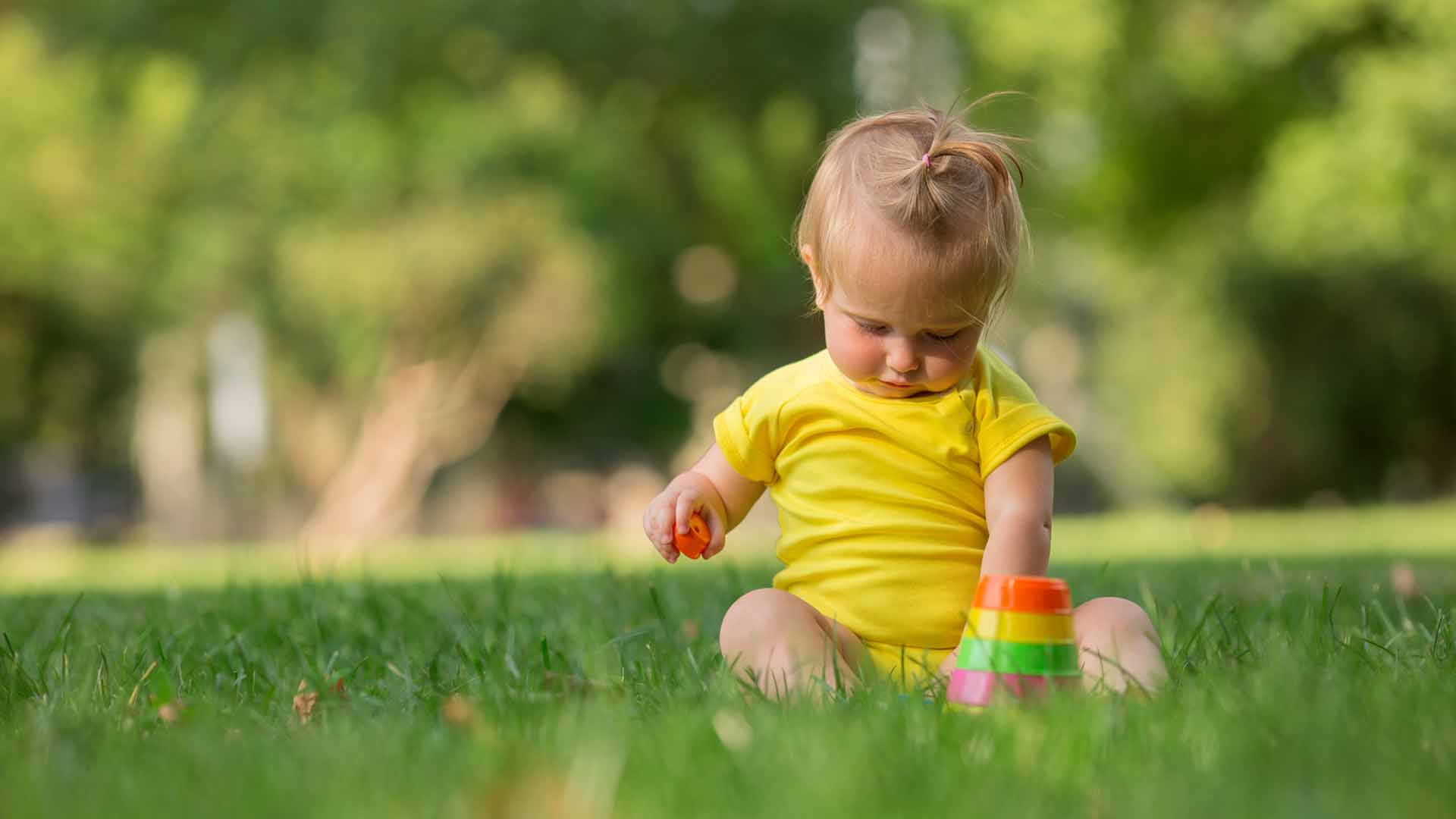

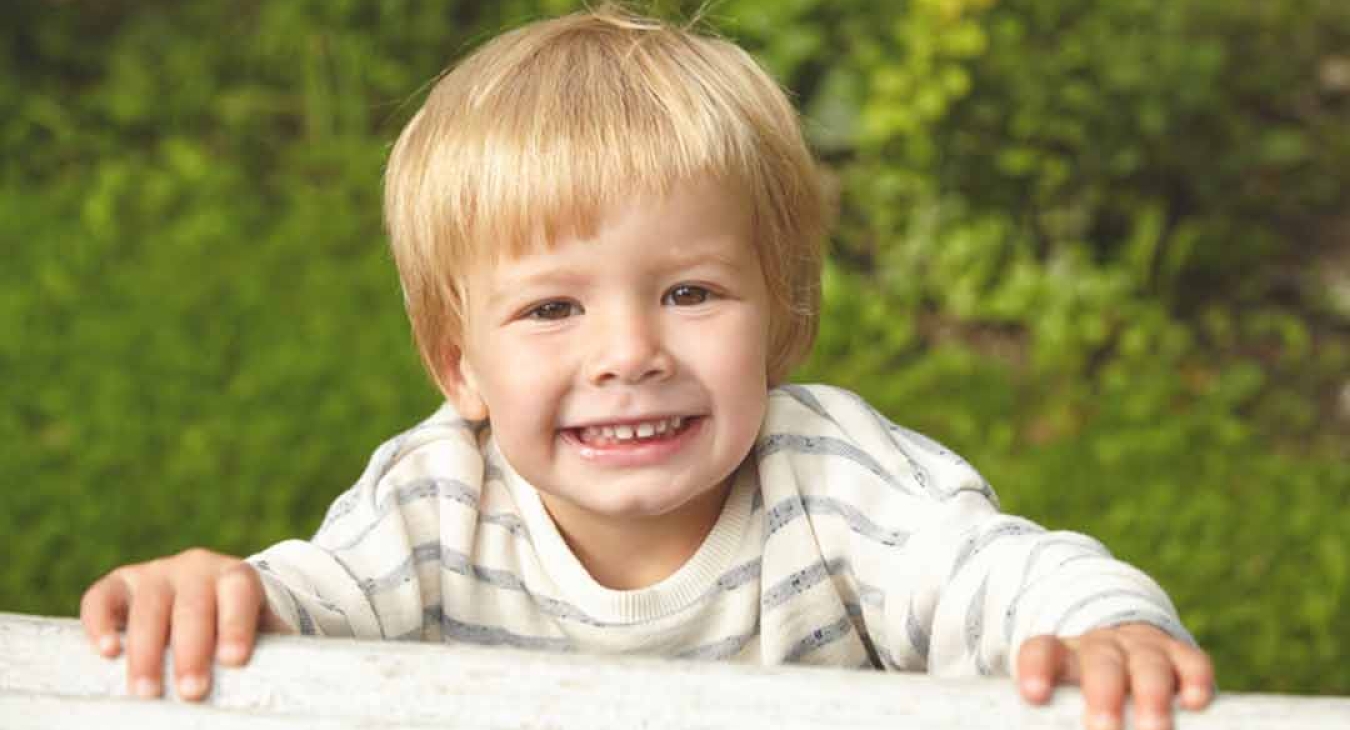
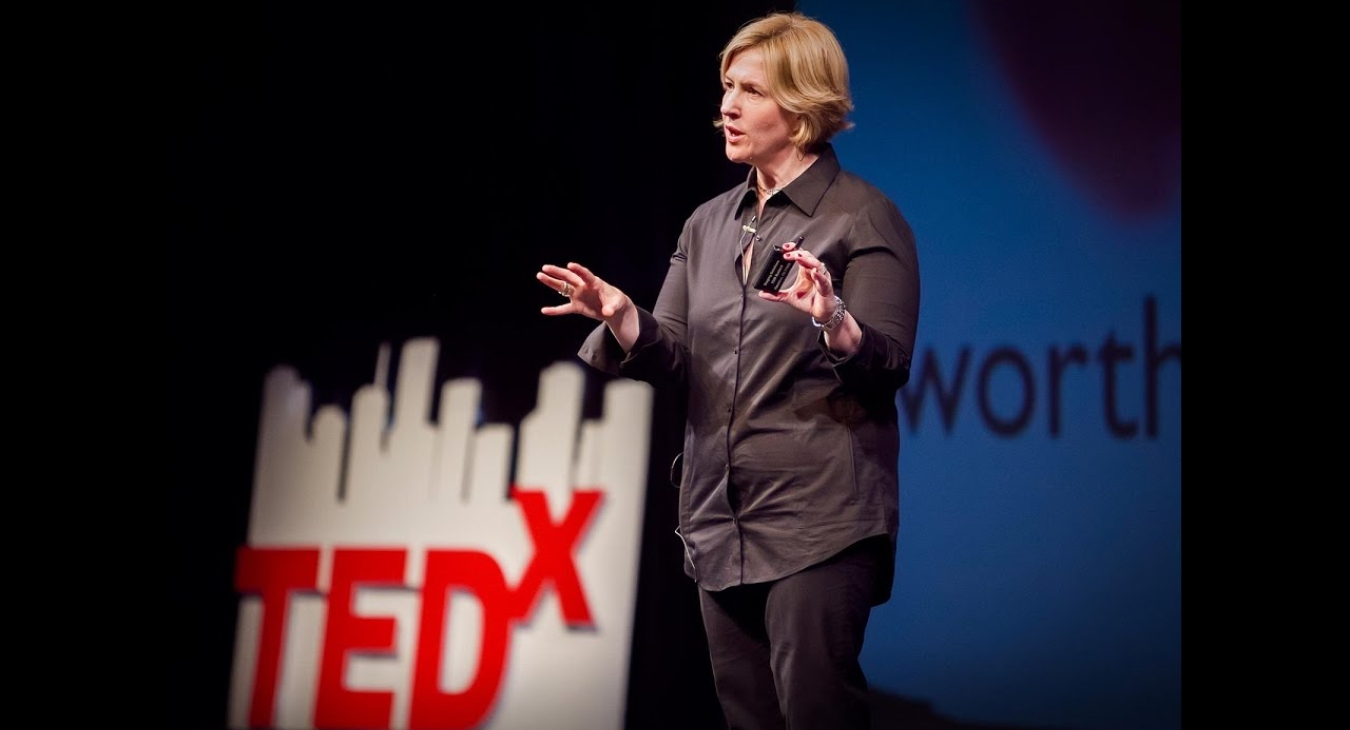
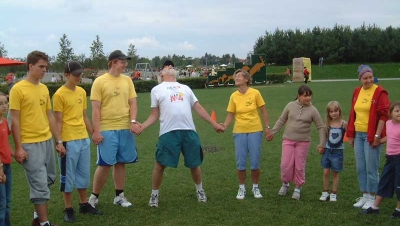
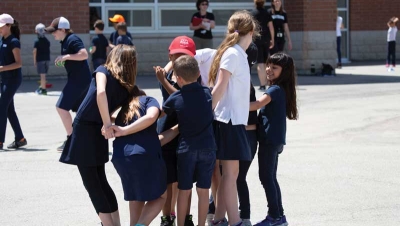
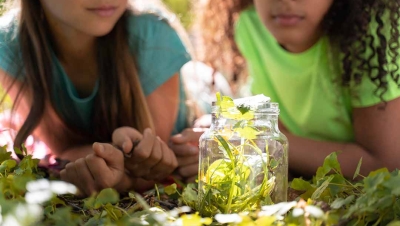



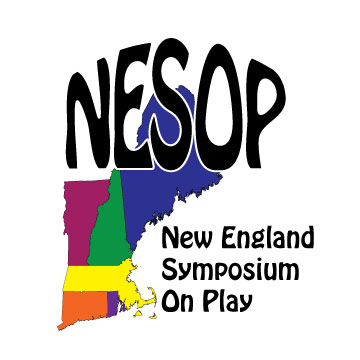


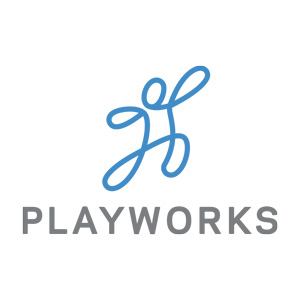



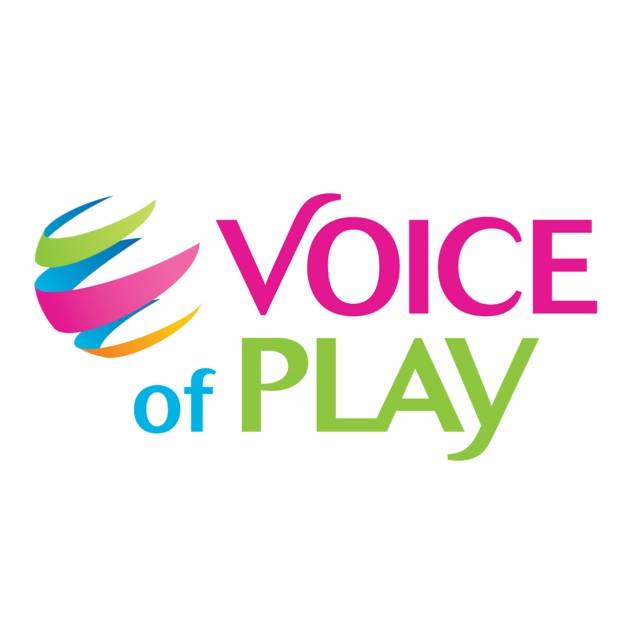



Thought Provoking
Great Article. I'm so glad we are getting to place where we can talk about the true essence of play. The industry can get so overwhelmed by safety and budgetary concerns that we overlook the elements and aspects of play and essential growth towards adulthood. Thank you for honoring us with this article. Please bring us more!
Great Article
Excellent, thought-provoking and selflessly written article by Mr. Beckwith. It is encouraging to see there are people more concerned with designing to benefit play instead of benefiting from play designing.
Thanks for sharing this article.
Comment from Hap Parker
Thanks for sharing this, I am honored! I really appreciate the idea of finding another view toward play & playspaces - with the old PIES, or SPEC that we used as a guide for ideation and development of ideas is valuable, and I still believe that it is a good model, but we always assumed that the physical, intellectual, and social would take care of the emotional, but I am not so sure that is the case, or that we did enough to prove that idea. Is the reverse also true? That there is multi-directional influence amongst the domains is evident, but that the emotional takes care of the P, I & S domains, may be more true than we have realized. Look at examples of people who overcome profound physical or mental disability to achieve monumental feats - there are many examples. It is clear that their drive to climb mountains, play an instrument, graduate from college, etc., is based in an emotional position that probably didn't come from their strength in the other domains. Today, we have more tools for evaluating these things, and more information from more points, such as Brene Brown's talk on vulnerability. And Jimi Jolley! Man I miss him! I had never seen his Entyrely Fun Tire Playgrounds guide, but I spent a long time looking at every drawing - he was a creative man! I am trying to think of how I might use some of his ideas in my yard. How a culture treats its children is the best measure of its health. Just sayin'.
Head & Heart
Excellent article this has been a subject of interest of mine for years, I'm very glad to see designers finally acknowledging this essential component of development in "PLAY".
Add new comment